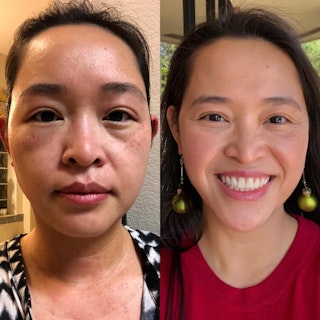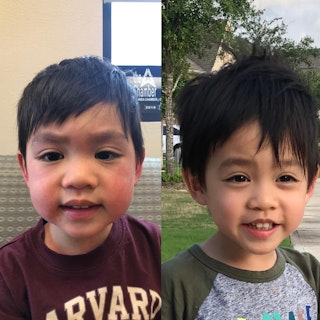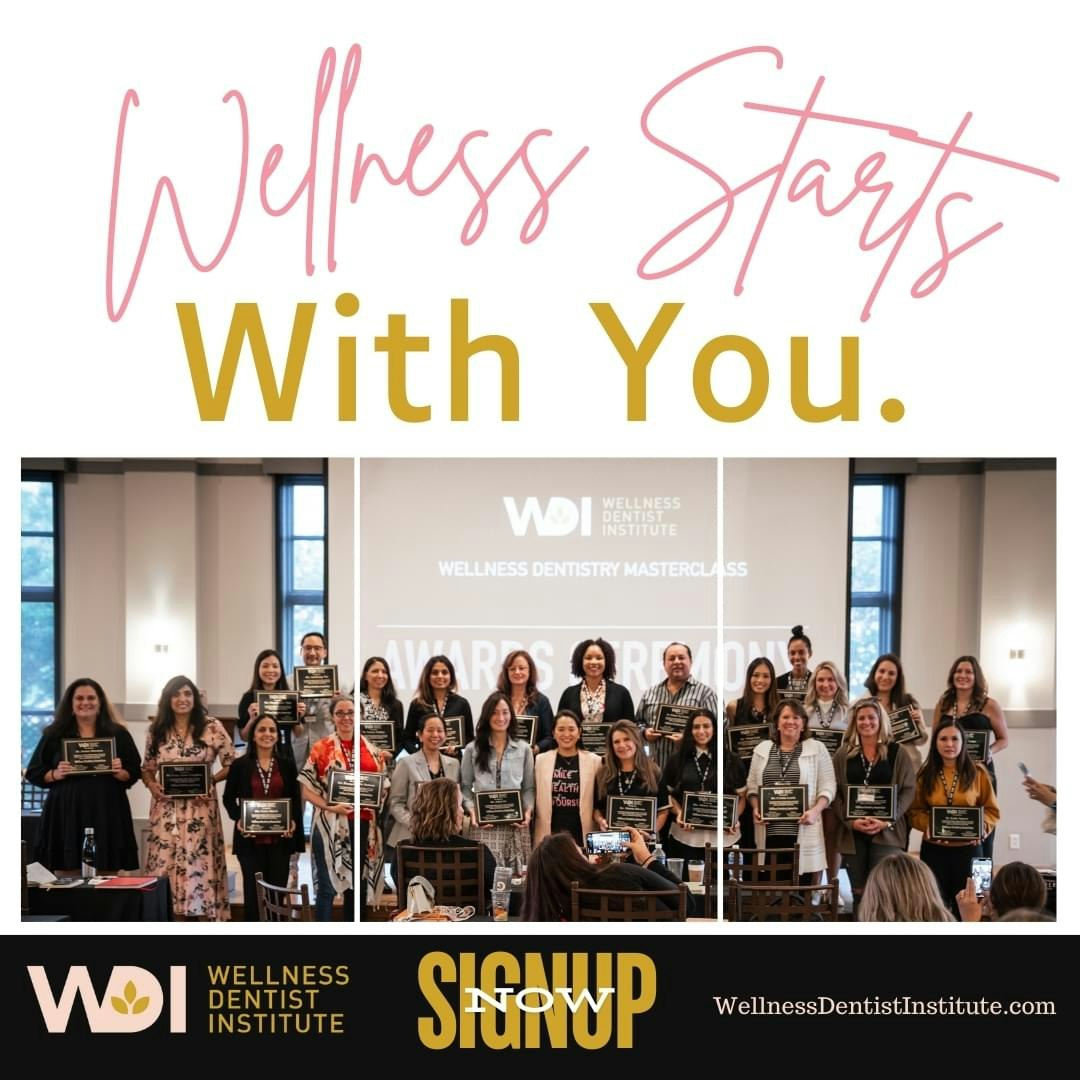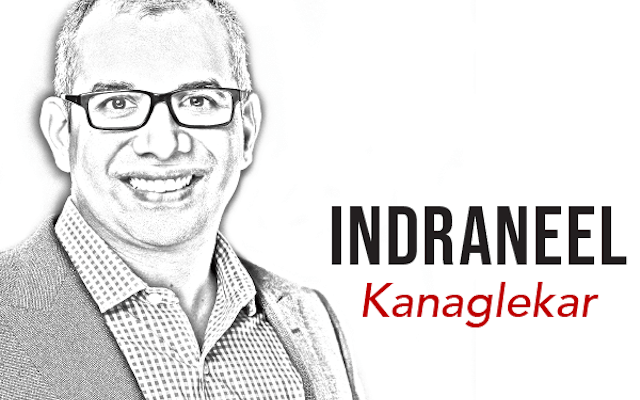by Dr. Katie To
This story begins in 2018. Life was good—my practice was thriving, my family was healthy, including my baby boy. I felt like I could finally tell my 15-year-old self that I was living the American Dream. I had moved to America from Vietnam at 15 and became the first and only dentist in my family.
In an Instant, Everything Changed.
I remember waking up one morning looking in the mirror to see a completely different person. It was as if I had been a victim of domestic abuse. My face was swollen, and I had a rash on my body. I thought it might be a food allergy. I thought, "What did I eat? What's going on with the weather or the air? Could it be mold?" I tried Benadryl and antihistamines; nothing worked. I went to my primary care physician and was given a steroid cream and a steroid pack. It made things worse.

Test after test, specialists kept telling me the same thing: "Katie, you have very high levels of inflammation. It could be an infection somewhere in your body, an autoimmune disease, or even cancer—we need to figure it out." They also noted that my vitamin D level was very low. At the time, I wasn't aware of the importance of vitamin D in dental practice conversations, but my level of 18 was extremely low when it should have been between 60 and 80.
As my symptoms worsened, I continued searching for answers. My appearance wasn't improving, and I could no longer wear black scrubs at work because the dandruff was so visible. I had to fight the urge to scratch in front of patients as the itching became unbearable. I would take breaks during lunch to cool down my skin before returning to see patients in the afternoon. Nights were worse; I couldn’t sleep. No medication helped. I was so exhausted that some days I couldn't even lift my arms or hold my child. It was terrifying.
My team began questioning what was happening to me. One day, my husband said, "Katie, I think you're dying. Something is really wrong." Hearing that from him was even more frightening.
Then, by accident, I got a lead. A patient came in for a hygiene check, looked at my face and neck and said, "You need to go see this doctor in Houston. My wife had similar symptoms and she’s getting better." He explained that this doctor was a functional physician—a term I had never heard before. I had nothing to lose, so I made the appointment.
During a two-hour exam, the doctor asked about everything—my birth, upbringing, environment, and occupation. Knowing I was a dentist, she ordered a test for heavy metal toxicity. They took samples of my blood, urine and even a piece of my hair. A few weeks later, I got the results: heavy metal toxicity. I had never heard of it and I was shocked. I had missed this in dental school, never encountered it in my practice, and now, here I was, the patient.
The big question was, “Where did this heavy metal come from?” I learned that the most common reason for heavy metal toxicity is exposure to metal fillings in the mouth. In a room full of medical and dental professionals, I showed my panoramic X-ray—zero metal fillings in my mouth. I have 32 healthy teeth, so it wasn’t from my dental work. Where was it coming from?
By the time I received this diagnosis, three months had passed—three months of sleepless nights, exhaustion, and hopelessness. I didn’t believe the first doctor and sought a second opinion. Different tests were conducted but the results were the same. Heavy metal toxicity. I thought there had been a mix-up, yet after a third opinion confirmed it, denial turned into desperation: “How can you help me?”
All three doctors explained that my symptoms matched those of metallic mercury and inorganic mercury poisoning.
It was like a different language to me—elemental mercury, organic mercury, methylmercury. I wondered if it could be from eating sushi, but they explained that sushi contains organic mercury, not the elemental or inorganic types that were found in my tests. So, it wasn’t the sushi.
It’s worth noting that the entire EU will ban dental amalgam usage by January 1, 2025. In the U.S., as of July 2020, you must have an amalgam separator in your practice or risk being shut down. I wish I had made these changes sooner but at this point I had no choice. The ultimatum from all three medical doctors was clear: “Katie, your mercury levels are too high for you to continue practicing dentistry the way you do. You need to change your practice or quit because it's killing you. And you cannot get pregnant—it’s too toxic for you and dangerous for a baby.” My husband and I had been trying to have a second child; I had to put everything on hold to get well. At work, I started researching so that we could began to practice mercury-safe dentistry.
If you don’t place amalgam fillings in your practice, you're considered a mercury-free practice. But if you're removing amalgam without the proper safety protocols, you aren’t practicing mercury-safe dentistry.This isn't as straightforward as it sounds. It involves extensive equipment, proper disposal methods, and rigorous protections for both patients and the team. We follow these strict protocols to protect everyone involved—myself, my team, and our patients, many of whom are dealing with serious health concerns.
Mercury Safe Practices
When we know better, we do better. That’s why, by the end of 2018, we implemented mercury safe practices in our office.
In April 2019, I faced a challenging moment with my son. With my experience and knowledge, I quickly understood what was happening and immediately sought genetic testing for him. We implemented a comprehensive, personalized approach based on his DNA and collaborated closely with his medical doctor. Thanks to the network of professionals I had built, support rushed in. Within just a week—not three months as we initially feared—he started to recover. It’s incredible what can be achieved with the right information and the right team.

This experience reinforced that things often happen for us, not to us. Without my own health journey, I wouldn’t have known what to do for my son. If my husband and I had to stay up with him every night for three months, we wouldn’t have been able to continue working and seeing patients. Thankfully, we were able to help him heal quickly.
When it came to my own health, I turned to holistic approaches when conventional prescriptions failed. Growing up in Vietnam, I was introduced early in life to homeopathic remedies, acupuncture, and herbal medicine. When my health hit a low point, I returned to these foundational practices. However, I realized that this wasn't enough on its own. I also needed IV therapy for micronutrients, a proper diet, hydration, and quality sleep. Healing is not just about the physical body; it also involves mental and spiritual well-being. I adopted an anti-inflammatory diet—eliminating sugar, dairy, and gluten—and focused on hydration from filtered water and fresh juices. Sleep became a priority, with no food three hours before bed, no work two hours before, and no screens one hour before. To further support my healing, I embraced movement through yoga and meditation; even became a certified yoga instructor with 200 hours of training.
Some might question the relevance of these approaches to dentistry. Yet, think about acupuncture: 50 years ago, it was seen as strange, even barbaric. Now, it’s widely accepted, with one in ten Americans either having experienced it or knowing about it. As we face increasing toxicity in our environment, our bodies can only handle so much. Acupuncture and other holistic practices are now integral to the treatment of many patients. By December 2018, after committing to this holistic path, I felt a profound sense of hope—like I’d been handed a second chance at life. I had learned not only how to care for my body but also how to help my patients more effectively. This journey led me to develop a new way of practicing that I call Wellness Dentistry.
Wellness Dentistry
Wellness Dentistry is comprehensive, incorporating not just teeth, gums, and bones, but also brain health, ENT consultations, GI assessments, and more. It represents a collaboration between dental and medical professionals. Every patient’s journey is unique, and our practice personalizes care based on DNA analysis, regular saliva testing, and understanding where they are in their healing journey. Patients are the heroes of their own stories; we are simply their guides.
Through my journey, I also learned the importance of biocompatibility—not just in the mouth, but systemically. Patients with conditions that trigger inflammation need materials that are compatible with their bodies. For example, we use BPA-free composites, and we've found that more patients in our practice are compatible with zirconia implants than titanium. We use dental ozone therapy instead of harsh chemicals like chlorhexidine, and we prefer lasers over traditional surgery. Everything must align with what’s best for the patient’s overall health.
This approach also means we must work closely with medical professionals. We've elevated the medical-dental relationship by routinely consulting with physicians to understand blood work and wellness markers. In fact, our top referral source is the MD Anderson Cancer Center because we understand how dental procedures can significantly impact a patient's health and survival. We collaborate with a wide range of specialists, from ENTs and neurologists to oral surgeons and periodontists. Dentists are no longer seen as secondary to medical doctors; we are crucial partners in the medical team.
Wellness Dentistry also aligns with sustainability and reducing our ecological footprint. We are mindful of the waste generated by disposable gowns, gloves, masks, and other materials. We strive to reduce, recycle, rethink, and reuse wherever possible.
Looking ahead to 2025 we are excited to open a new practice dedicated to wellness and sustainability. This green practice will also house the Wellness Dentist Institute, where we’ll train dentists and their teams across the country to implement this model. This movement has already been embraced by over 100 practices in the U.S. and each year we gather at the Dental Wellness Summit to continue learning and growing together.
Together, we are not just addressing problems, we are creating true health and wellness. By combining precision medicine with precision dentistry, we are also making our planet a better place. This journey has taught me that while dentistry is my passion, wellness is truly my calling. And my family is my everything.
When our second child arrived, we were prepared. At just two days old, our baby Apple had her DNA tested, and we knew exactly which roadmap and path to take to ensure her health.

Wellness Dentistry Summit: 2025 Dates Coming Soon
Join us for the Wellness Dentist Summit, a transformative day and a half designed for dental professionals eager to explore the future of dentistry. This summit is all about growing as Wellness Dentists, empowering you to integrate wellness principles into your practice, and enhance patient care for healthier, happier lives.
Our distinguished speakers are trailblazers in the field of Wellness Dentistry. Throughout the event, you’ll engage in hands-on learning, networking, and knowledge-sharing with fellow dental professionals. Explore groundbreaking topics such as:
Dental Ozone Therapy: Harness the power of ozone to enhance patient outcomes.
Lab Saliva Testing: Understand the critical role saliva testing plays in patient diagnostics.
Business of Wellness Dentistry: Learn how to integrate wellness into your business model for sustainable success.
Going Fee for Service: Transition smoothly and confidently into a fee-for-service practice.
Hiring for a Wellness Practice: Strategies to build a team that supports your wellness goals.
Handling Challenges in Wellness Dentistry: Overcome obstacles and ensure smooth patient care.
Marketing for a Wellness Practice: Effective ways to promote your practice’s wellness philosophy.
Annual Planning Session for 2025: Prepare for the future with strategic planning tools.
And that’s just the beginning!



